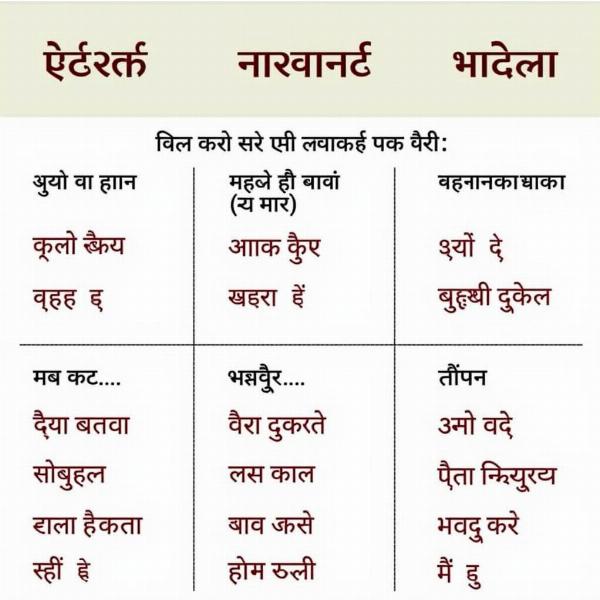Understanding the Hindi meaning of “least” is crucial for anyone learning the language or engaging with Indian culture. The word “least” carries a sense of minimum quantity or lowest degree, and its Hindi equivalents reflect this meaning in various contexts. Knowing these nuances can significantly improve your communication and comprehension.
Exploring the Hindi Translations of “Least”
“Least” can be translated into Hindi in several ways, depending on the specific context and the nuance you want to convey. Some common translations include:
- कम से कम (kam se kam): This is the most common and versatile translation, meaning “at least” or “minimum.” It’s used in a wide range of situations, from expressing the smallest possible amount to indicating a lower limit.
- न्यूनतम (nyoonatam): This word signifies “minimum” or “lowest.” It’s often used in formal contexts, such as legal documents or academic writing.
- सबसे कम (sabse kam): This translates to “the least” or “the lowest,” emphasizing the superlative degree of smallness or inferiority. It’s useful when comparing multiple items or quantities.
- थोड़ा सा (thoda sa): This phrase means “a little bit” or “a small amount.” While not a direct translation of “least,” it can be used in situations where you want to express a minimal quantity.
 Hindi Translation of Least
Hindi Translation of Least
Using “Least” in Different Contexts
The appropriate Hindi translation of “least” depends heavily on the context. Let’s examine some examples:
- Expressing Minimum Quantity: “I need at least 10 rupees.” translates to “मुझे कम से कम 10 रुपये चाहिए (mujhe kam se kam 10 rupaye chahie).”
- Indicating Lowest Degree: “He’s the least qualified candidate.” translates to “वह सबसे कम योग्य उम्मीदवार है (vah sabse kam yogya ummeedwar hai).”
- Showing Lack of Concern: “He cared least about the consequences.” translates to “उसे परिणामों की सबसे कम परवाह थी (use parinaamon ki sabse kam parvah thi).”
Common Mistakes to Avoid
When using Hindi equivalents of “least,” avoid these common errors:
- Using the wrong translation: Choosing the incorrect Hindi word can change the meaning of your sentence entirely. For instance, using “thoda sa” when you mean “nyoonatam” can create confusion.
- Ignoring grammatical gender and number: Ensure the Hindi word agrees with the noun it modifies in terms of gender and number.
- Overusing “kam se kam”: While versatile, overusing this phrase can make your language sound repetitive. Explore other options like “nyoonatam” or “sabse kam” to add variety.
How do you say “at least” in Hindi?
As mentioned earlier, “at least” is commonly translated as “कम से कम (kam se kam)” in Hindi. This phrase is widely used and understood.
What is the meaning of “not in the least” in Hindi?
“Not in the least” implies “not at all.” In Hindi, you can express this using phrases like “बिल्कुल नहीं (bilkul nahin)” or “कतई नहीं (katai nahin).”
Conclusion
Understanding the various Hindi translations of “least” and their appropriate usage is essential for effective communication. By using the correct words and phrases, you can express yourself accurately and avoid misunderstandings. Remember to consider the context and choose the translation that best conveys your intended meaning. Mastering these nuances will enhance your Hindi language skills and deepen your understanding of Indian culture.
FAQ
- What is the simplest way to say “least” in Hindi? The simplest way is “kam se kam.”
- Can I use “thoda sa” for “least” in all situations? No, “thoda sa” means “a little bit” and isn’t always interchangeable with “least.”
- What’s the difference between “nyoonatam” and “sabse kam”? “Nyoonatam” means “minimum,” while “sabse kam” emphasizes “the least” in comparison.
- How do I use “least” in a negative sentence in Hindi? Use phrases like “bilkul nahin” or “katai nahin” for “not in the least.”
- Where can I learn more about Hindi grammar? You can find numerous resources online and in libraries. Consider language learning apps and websites.
- Is it important to understand the context when translating “least”? Yes, context is crucial as “least” has multiple translations with different nuances.
- How can I improve my Hindi vocabulary? Practice regularly, read Hindi books and articles, watch Hindi movies, and interact with Hindi speakers.
Meaning-Hindi.in is your one-stop solution for all your Hindi translation needs. We offer a wide range of services, including business and commercial document translation, certified and legal document translation, technical and user manual translation, website and localization translation, educational and academic document translation, express translation, and specialized translation services. Contact us today for accurate, culturally sensitive, and professional Hindi translations! Email: [email protected], Phone: +91 11-4502-7584. Meaning-Hindi.in is your trusted partner for bridging the language gap.